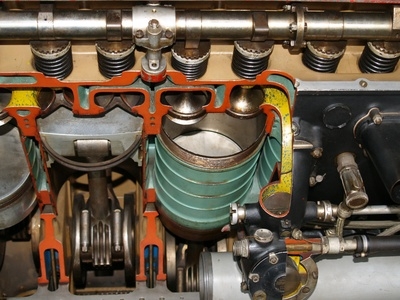
Although not recommended, replacing valve guides is possible for the knowledgeable home mechanic. Because of the exacting measurements involved and the critical nature of valve guides, it is usually recommended that the removal and installation of valve guides be referred to a competent machine shop. In the case of the home mechanic, replacing valve guides can be accomplished with a few basic tools and a lot of careful planning.
In cylinder heads where the valve guide is difficult to remove or oversized valve guides are going to be installed, a drill or drill press is used to drill the guide out. A drill bit slightly smaller than the guide is inserted into the drill and reams the guide material out of the head, which loosens the guide and facilitates pressing or punching it out. When oversized valve guides are going to be installed the drill press is used to ream the mounting hole to the appropriate size for installation of the new larger guides.
A drift is referred to by several different terms such as guide-driver, valve guide removal tool and installation tool and is simply a long metal pole that is sized slightly smaller in diameter than the valve guide. It is used in combination with a press to push a valve guide out of its mount or is hit with a hammer to force the guide from the cylinder head. Drifts are usually constructed of metal that is slightly softer than the metal the cylinder head is made of to reduce the chances of damaging the cylinder head when hammering out a valve guide.
An arbor press is a small mechanical press that generates large amounts of pressure. It is usually used in combination with a drift to press valve guides out of and into cylinder heads. Arbor presses are more commonly used when removing valve guides from aluminum cylinder heads as aluminum is a relatively soft metal and easily damaged by the hammering and rough handling associated with pounding guides out.